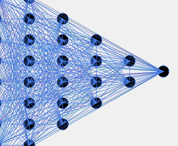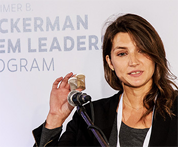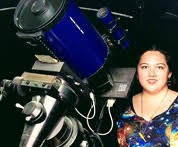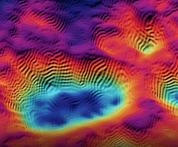Yael Tsarfati, Zuckerman-CHE Postdoctoral Scholar for Outstanding Israeli Women, publishes paper in Microscopy and Microanalysis.
Paper summary:
Polymeric organic mixed ionic–electronic conductors (OMIECs) are soft organic materials that are advantageous for varied bioelectronic and energy storage devices, ranging from organic electrochemical transistors (OECTs) and biosensors to batteries and supercapacitors [1]. Their ability to function in water-based environments is a crucial attribute that makes them well-suited for these applications. One widely used successful strategy for obtaining OMIECs with enhanced ion uptake, and hence increased capacitance, is placing ethylene glycol side chains on the polymer backbone [2]. Nevertheless, the current understanding of the structure of glycolated OMIECs is still limited, especially in operational states, where they are hydrated and electrochemically doped. Understanding the structure of OMIECs in the hydrated condition is challenging, and incompatible with many standard techniques [3]. Here we describe experiments where we used cryogenic vitrified solid-state samples and advanced scanning nanobeam diffraction (4D-STEM) to study these materials in the hydrated condition. The model system is a homo-polymer with 3,3’dialkoxybithiophene as the repeating using (gT2) and methyl end-capped and triethylene glycol side chains, p(g3T2). We have previously applied 4D-STEM to study these materials in the dry solid-state, using py4DSTEM [4] to mine structural information from the molecular to the mesoscale level, providing a baseline and analysis pipeline for the more complex states. Applying this hybrid approach, we demonstrate the structural changes induced in glycolated OMIECs by hydration; a prominent change is the expansion of the lamellar structure. It is worth noting that this structural change was not anticipated, and in fact, theoretical simulations had predicted a contraction in the lamellar structure [5]. We believe this methodology can facilitate understanding of the structures of these materials in their operational modes. Our results show how cryogenic 4D-STEM can provide true structure-function relationships that can help improve our rational design of OMIECs thin films for more efficient devices.
 ISRAELI COUNCIL FOR HIGHER EDUCATION
ISRAELI COUNCIL FOR HIGHER EDUCATION MIT-Israel Zuckerman STEM Fund for Faculty Collaboration
MIT-Israel Zuckerman STEM Fund for Faculty Collaboration The Zuckerman Travel and Research STEM Fund at Harvard
The Zuckerman Travel and Research STEM Fund at Harvard Zuckerman AI Fund at Technion
Zuckerman AI Fund at Technion Alan Alda Communicating Science
Alan Alda Communicating Science Zuckerman Institute – ScienceAbroad
Zuckerman Institute – ScienceAbroad Zuckerman Institute – America-Israel Friendship League partnership
Zuckerman Institute – America-Israel Friendship League partnership


























